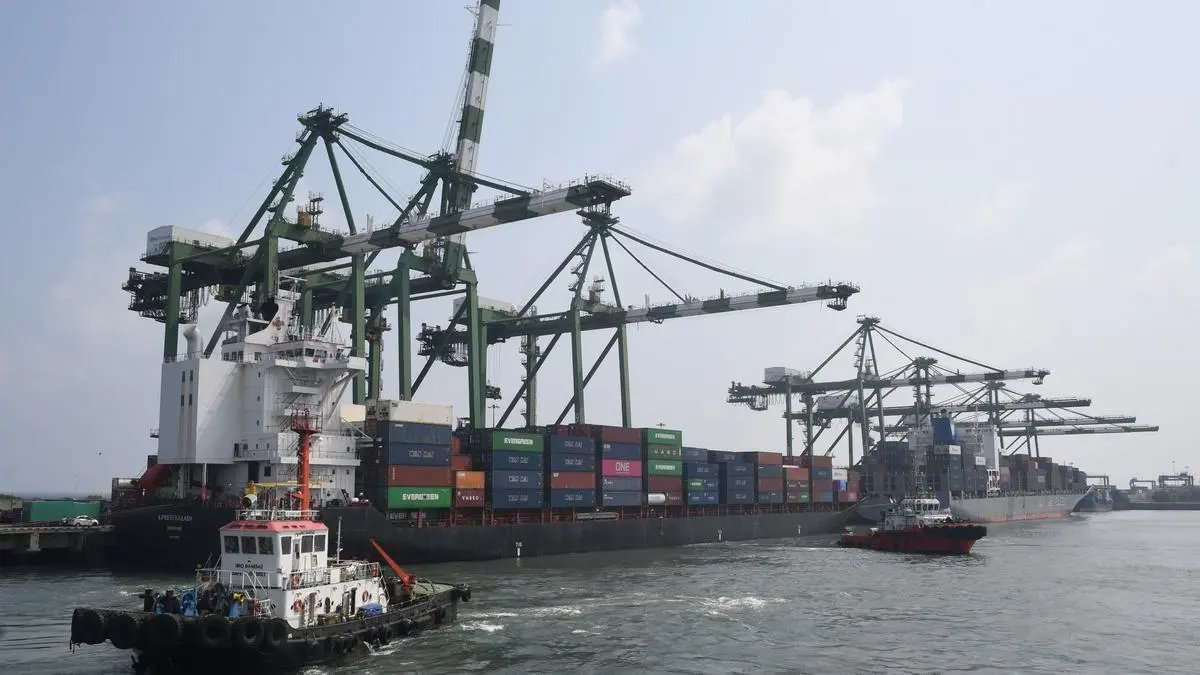Centre rolls-out back-to-back boost for ship building industry

For the shipbuilding sector, back-to-back announcements by the Centre in a span of five months are expected to uplift the industry, which contributes about 1 per cent to the global fleet and holds potential to increase this share in the future.
Data in the public domain shows that India’s fleet comprises of about 1,600 vessels, with a gross tonnage (GT) of 14 million. The country spends close to $75 billion annually on leasing ships from abroad while owning about 2 per cent of the world’s total tonnage. These figures reflect the grim state of the shipbuilding sector, with the need to do lots more in the future.
On Wednesday, the Union Cabinet, chaired by Prime Minister Narendra Modi, approved a comprehensive package of ₹69,725 crore to revitalise India’s shipbuilding and maritime ecosystem, in the backdrop of increasing momentum in the sector.
Prior to that, Union Finance Minister Nirmala Sitharaman, in the Budget, announced a revamp of the Shipbuilding Financial Assistance Policy to address the cost disadvantages. Large ships above a specified size will be included in the infrastructure harmonised master list (HML) and shipbuilding clusters will be facilitated to increase the range, categories and capacity of ships.
For long-term financing of the maritime industry, a Maritime Development Fund with a corpus of ₹25,000 crore will be set up. This will be for distributed support and promoting competition, with up to 49 per cent contribution by the government, and the rest mobilised from ports and the private sector.
These announcements could have multiple impacts.
It can create Atmanirbhar Bharat in shipping and with more ships built in India, the heavy reliance on China, which has 60 per cent share, can be reduced. At present, 95 per cent of India’s foreign trade happens through foreign-owned and foreign-flagged vessels. This results in an outgo of $110 billion annually from India. Further, nearly 60 per cent of the country’s ship repair work happens outside the country. There could be a substantial saving if the country has its own ship building capacity and repair facilities.
Today, only mid-size ships are made in India. However, building capacities for building big ships need a lot of finance. Bank rates are high due to risks in shipping, and hence the incentive and funds will help, a senior official in the industry, said. However, there is still a gap in technology, and for this, joint ventures with the “big boys” like China, Korea and Japan is required, he adds.
In a boost to the ship building activity in Tamil Nadu, last week, the State government signed two Memorandums of Understanding (MoUs) in the shipbuilding sector with state-run Cochin Shipyard and Mazagon Dock Shipbuilders to establish two greenfield commercial shipyards in the state. The projects will see a combined investment of ₹30,000 crore and generate employment for 55,000 people.
Cochin Shipyard Limited will invest ₹15,000 crore to build a commercial shipbuilding yard. The project is expected to generate over 10,000 jobs (4,000 direct and 6,000 indirect). Mazagon Dock Shipbuilders, the premier war-shipbuilding yard in India, will also invest ₹15,000 crore, creating employment for more than 45,000 people (5,000 direct and 40,000 indirect).
These are just the start. Many more large deals will come in future, said a shipping expert. South Korean companies are already showing interest in building large ships in India, he added.
Jagannarayan Padmanabhan, Senior Director at research and ratings agency CRISIL Ltd, says the government’s recent initiatives for the shipbuilding sector are designed to address the industry’s 20-35 per cent price disadvantage. The policies are not general subsidies but are targeted at specific cost issues. Measures such as the Maritime Development Fund, financial assistance, and custom duty exemptions directly respond to the high costs of capital and raw materials that affect Indian shipyards. This intervention aims to improve the global competitiveness of the domestic industry and support national manufacturing goals. The package represents a structured effort to strengthen a key sector and enhance its position in the international market.
Rear Admiral Vipin Kumar Saxena (retd), CEO, Swan Defence and Heavy Industries, the government’s announcement is a pivotal moment for India’s shipbuilding sector and marks a transformative step for the industry. By focusing on expanding annual Gross Tonnage and developing mega shipbuilding clusters, the package enables Indian shipbuilders to scale infrastructure to global standards. It also makes the sector an attractive opportunity for both capital investment and knowledge sharing. The provision of long-term financing and risk mitigation reflects the kind of strategic support the industry has long awaited.
Published on September 26, 2025



